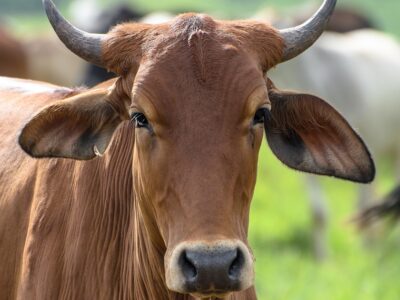Below you can find a complete list of Iranian animals. We currently track 259 animals in Iran and are adding more every day!
Situated at the crossroads between Western Asia and India, Iran is a land of steep mountainous terrain, semi-arid deserts, and mixed forests. Featuring a rich history that dates back to the original Persian Empire, it is bound between Iraq in the west and Pakistan in the east, the Caspian Sea in the north, and the Persian Gulf in the south. The country has a particularly rich heritage of felines, hoofed mammals, bats, rodents, reptiles, and migrating birds.
The Official National Animal of Iran
Rather than a single national animal, Iran instead has a list of national symbols, which includes the Asiatic lion, Asiatic cheetah, Persian leopard, Persian cat, and Persian fallow deer.
Where to Find the Top Wild Animals in Iran
The best place to find Iran’s rich wildlife is its national parks. The Nayband Wildlife Reserve, which is the country’s largest park at 6,000 square miles, consists of mountains and desert plains in the South Khorasan Province toward the east. It is native to leopards, gazelles, goats, and plenty of snakes.
The Khar Turan National Park, which is the country’s second-largest wildlife reserve, can be found in the northeast, near the Caspian Sea. It forms a long stretch of protected land with the nearby Golestan National Park and the Miandasht Wildlife Refuge.
The Sorkheh Hesar Forest Park, Lar National Park, and Khojir National Park are all located directly to the east of Tehran. They are good places to observe migrating birds that arrive for the winter. Finally, the Kavir National Park to the east of Namak Lake has some Indian wolves, striped hyenas, Asiatic cheetahs, and gazelles.
The Most Dangerous Animals in Iran Today
Although Iran is home to several big carnivores, attacks on humans from wolves and bears are very rare. For the most dangerous animals, you should consider the more venomous species.
- Scorpions – Iran has many different species of scorpions, but one particular species that goes by the scientific name of Hemiscorpius lepturus has a strangely painless sting. This hides the fact that dangerous toxins are spreading throughout the body and can lead to serious wounds, inflammation, and even death. In fact, this one species seems to be responsible for the vast majority of scorpion deaths in Iran.
- Snakes – Iran is the home of quite a few venomous snake species in its arid deserts. The Persian horned viper and the spider-tailed horned viper have toxins that cause some bleeding and hemorrhaging. The Caspian cobra, which only lives in the arid northeastern part of the country, has neurotoxin that can cause weakness, paralysis, and even death. However, the saw-scaled viper, which is native to the Middle East and India, might be responsible for more deaths than any other snake.
Endangered Animals in Iran
Despite the fact that large stretches of the country are sparsely inhabited by humans, many of Iran’s larger animals are still facing the prospect of extinction. The country’s conservation efforts need to be improved before it’s too late for many of these endangered species.
- Persian Leopard – This subspecies of the leopard only has about 1,000 individuals remaining in the wild and is now in danger of becoming extinct.
- Asiatic Cheetah – This subspecies once stretched across India and the Middle East, but as a result of habitat loss, hunting, and a fall in prey numbers, it’s thought that less than a hundred now remain in the wild. It is highly endangered and could eventually become extinct.
- Caspian Seal – Found exclusively along the shores of the Caspian Sea, this seal species has fallen from a high of 1.5 million to perhaps around 100,000 due to predation, industrialization, and overexploitation of the local ecosystem.
- Persian Fallow Deer – Nearly hunted to extinction by the late 19th century, this deer has been slowly reintroduced to parts of its former habitat. However, there are still only about a thousand of them remaining.
- Siberian Crane – This waterbird has a western population and an eastern population. The western population breeds in Siberia and migrates south for the winter near the Caspian Sea. However, there are very few western cranes remaining and they may already be extinct.
- Egyptian Vulture – Sporting a white plumage, this species of scavenging vulture is threatened by hunting, pesticide use, intentional poison, power lines, and other human activity.
The Flag of Iran
The Iranian flag is a tricolor with three evenly spaced bands of various colors, including green, white, and red. The country’s crest, which is red and stylized to look like a tulip, and contains the word, Allah, is located at the center of the white band. The flag also includes the Arabic salutation Allāhu Akbar. It is written in Kufic script 11 times on the inside corners of the red and green bands.
Iranian Animals

Admiral Butterfly
Stunningly beautiful wings
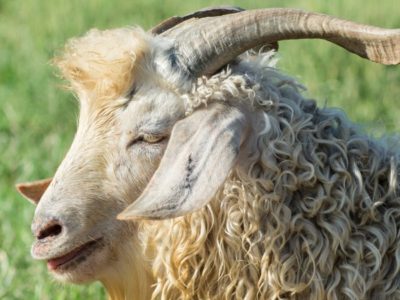
Angora Goat
Each adult Angora goat produces about 12 inches of mohair annually while kids have about 8 inches.

Ant
First evolved 100 million years ago!

Antelope
Renew their horns every year!

Armyworm
They are so named because they "march" in armies of worms from one crop to another in search of food
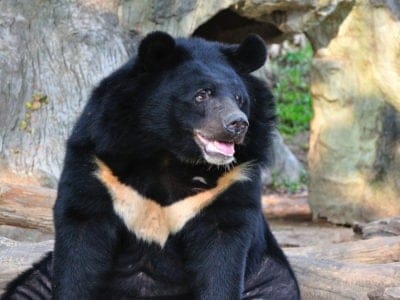
Asiatic Black Bear
Known to eat 160 different tree-borne fruits in Thailand!

Aurochs
Extinct ancestor of all domesticated cattle!

Avocet
Has a curved, upturned beak!

Banana Spider
People spin clothing and fishing nets out of these spiders’ silk.

Barb
There are over 1768 known species!

Barn Owl
Found everywhere around the world!

Barn Swallow
Older offspring help care for new hatchlings.

Bat
Detects prey using echolocation!

Bear
There are 8 different species!

Bed Bugs
Bed bugs feed for 4-12 minutes.

Bee
Rock paintings of bees date back 15,000 years

Beetle
There are more than 350,000 different species

Bird
Not all birds are able to fly!

Biscuit Beetle
The biscuit beetle form a symbiotic relationship with yeast

Black Widow Spider
They typically prey on insects!
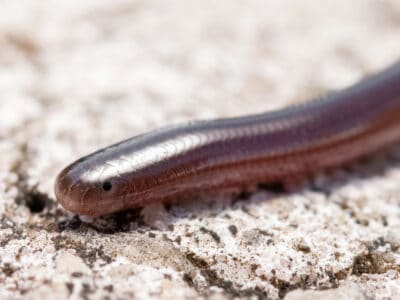
Brahminy Blindsnake
These snakes have been introduced to all continents, except Antarctica!

Brazilian Treehopper
“Mild-Mannered Minimonsters”

Brown Dog Tick
Can live its entire life indoors

Bumblebee
The most common species of bee!

Butterfly
There are thought to be up 17,500 species!
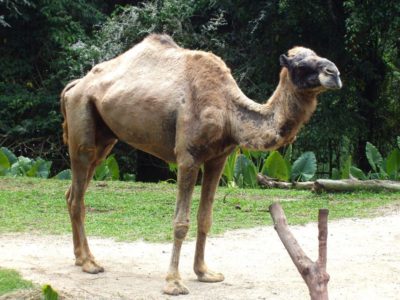
Camel
Can survive without water for 10 months!

Camel Cricket
The camel crickets that are found in the USA are light brown in color. They also have dark streaks all over their body.
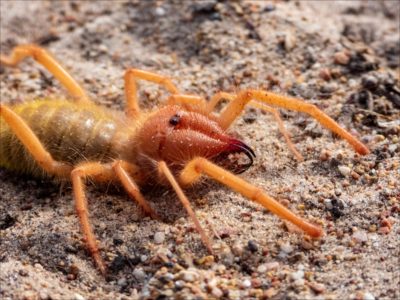
Camel Spider
Fast, carnivorous arachnid with a painful bite.

Caracal
Has 20 different muscles in it's ears!

Carpenter Ant
Carpenter ants can lift up to seven times their own weight with their teeth!
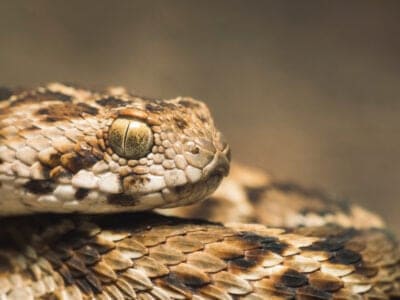
Carpet Viper
The Carpet Viper probably bites and kills more people than any other species of snake.
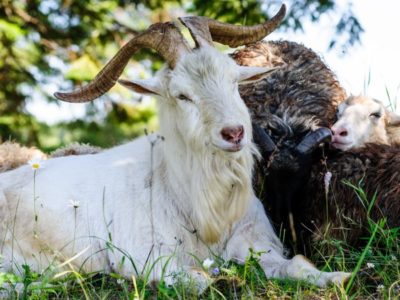
Cashmere Goat
Cashmere goat are named after Kashmir regions of India and Pakistan

Cat
May have been domesticated up to 10,000 years ago.

Caterpillar
The larvae of a moth or butterfly!

Catfish
There are nearly 3,000 different species!

Centipede
There are about 3,000 documented species!
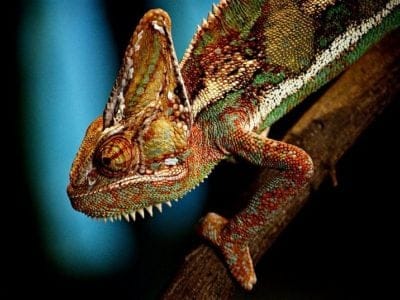
Chameleon
There are more than 160 different species!
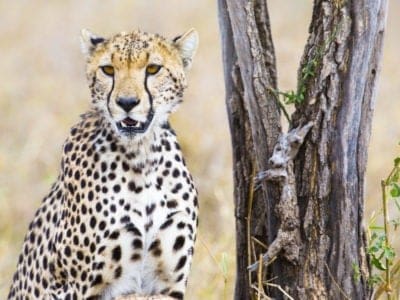
Cheetah
The fastest land mammal in the world!

Chicken
First domesticated more than 10,000 years ago!
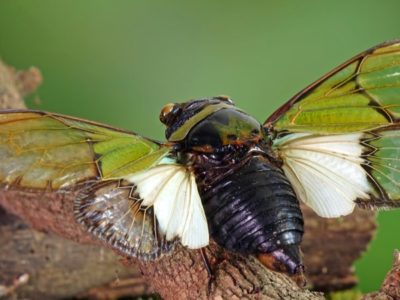
Cicada
Cicadas have one of the longest insect lifespans
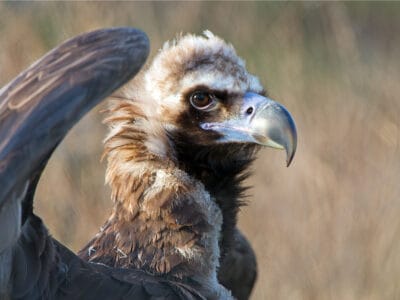
Cinereous Vulture
This vulture can fly at great heights. At least one was found a few thousand feet from the top of Mount Everest.

Cockroach
Dated to be around 300 million years old!

Codling Moth
Pupae are able to undergo diapause to survive poor fruit yield years and winter.

Common Buzzard
The most common raptor in the UK!

Common Furniture Beetle
The common furniture beetle feeds exclusively on wood

Common House Spider
House spiders have the ability to eat most insects in a home.

Common Raven
A group of ravens is called an unkindness or a conspiracy.

Cormorant
They can fly 35 mph and dive 150 feet below water.

Cow
There are nearly 1.5 billion worldwide!

Crab
There are 93 different crab groups

Crab Spider
Crab Spiders can mimic ants or bird droppings

Crane
Many are critically endangered species!

Cricket
Male crickets can produce sounds by rubbing their wings together

Crocodile
Have changed little in 200 million years!

Crocodylomorph
Crocodylomorphs include extinct ancient species as well as 26 living species today.

Crow
A group of these birds is called a Murder.

Deer
There are around 40 different species!
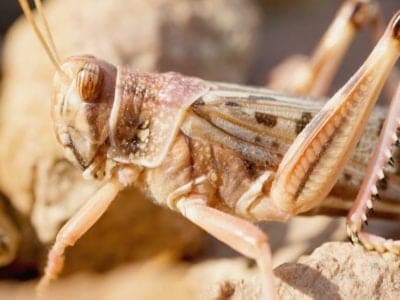
Desert Locust
Solitary locusts are grey while gregarious locusts are yellow with stripes.
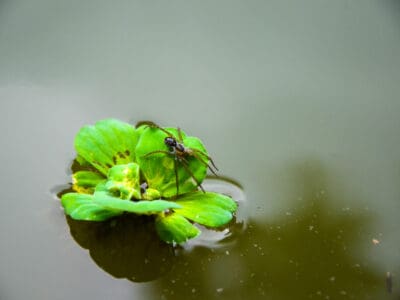
Diving Bell Spider (Water Spider)
Diving bell spiders can breathe underwater using an air bubble on their abdomen

Dog
First domesticated in South-East Asia!

Dog Tick
Dog ticks feed on dogs and other mammals

Donkey
First domesticated 5,000 years ago!

Dragonfly
It's larvae are carnivorous!

Duck
Rows of tiny plates line their teeth!

Dung Beetle
The dung beetle can push objects many times its own weight

Eagle
Has exceptional eyesight!

Earthworm
They are hermaphrodites, which means they have male and female organs

Earwig
There are nearly 2,000 different species!

Eel
Eels can be a mere few inches long to 13 feet!
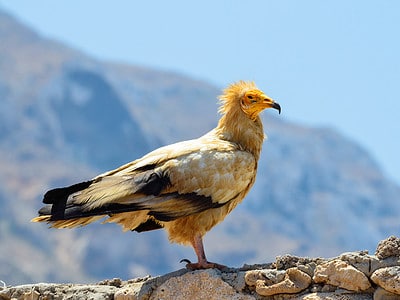
Egyptian Vulture
They steal large ostrich eggs and use rocks and pebbles to crack the shells.
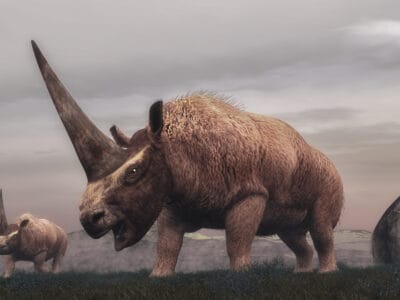
Elasmotherium
Elasmotherium might have had a monstrous horn, giving it the name "The Siberian Unicorn."

Elephant
Spends around 22 hours a day eating!
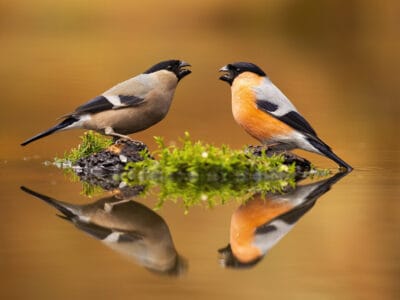
Eurasian Bullfinch
The shy eurasian bullfinch prefers to forage very close to cover.

Eurasian Eagle-owl
The Eurasian Eagle-owl is the second largest owl in the world with a wingspan up to six feet!
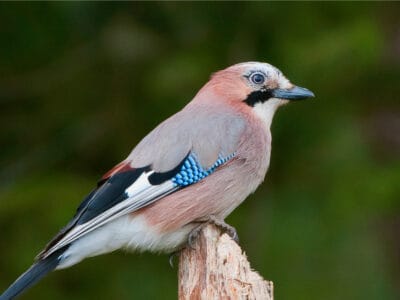
Eurasian Jay
The Eurasian jay has the ability to mimic other sounds
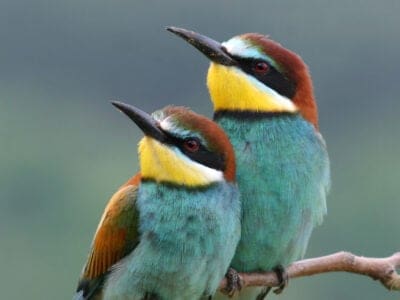
European Bee-Eater
They can eat up to 250 bees per day!
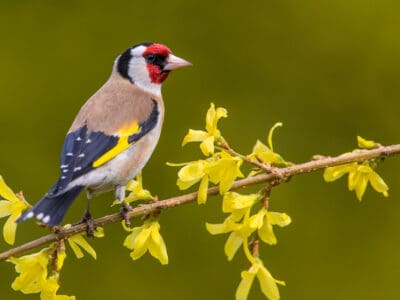
European Goldfinch
They are frequent visitors to backyard feeders, especially those containing niger seeds.

European Robin
Male robins are so aggressive and territorial that they will attack their own reflections.

Falcon
The fastest creatures on the planet!

Fallow deer
The fallow deer has more variation in its coat colors than most other deer.

False Widow Spider
False spiders actually prey on black widow spiders and other hazardous spiders
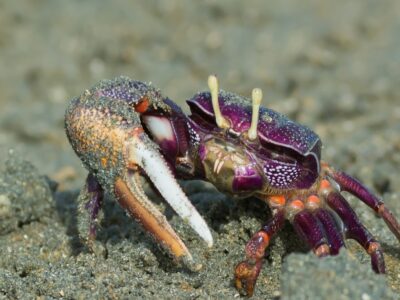
Fiddler Crab
The fiddler crab gets its name from the motion the males make with their over-sized claw during the mating ritual.
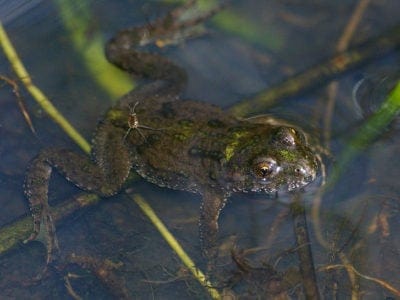
Fire-Bellied Toad
Found across mainland Europe and Asia!

Firefly
The firefly produces some of the most efficient light in the world
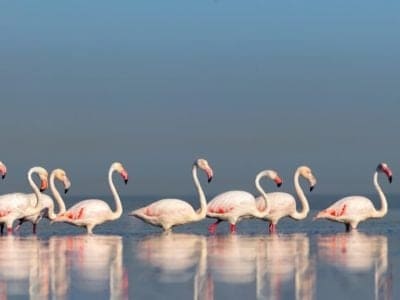
Flamingo
Sleeps on just one leg!

Flea
Adult fleas can jump up to 7 inches in the air

Fly
There are more than 240,000 different species!

Flying Squirrel
Can glide up to 90 meters!

Fox
Only 12 species are considered "true foxes"

Frog
There are around 7,000 different species!

Fruit Fly
Fruit flies are among the most common research animals in the world

Gazelle
Named for the Arabic word for love poems

Gecko
There are thought to be over 2,000 species!

Gerbil
Originally known as the Desert Rat!

German Cockroach
The most common type of urban roach

Giant Trevally
The largest fish in its genus

Glass Lizard
Can grow up to 4ft long!

Glowworm
Found inhabiting dense woodland and caves!

Gnat
Males form large mating swarms at dusk

Goat
Most closely related to the Sheep!

Goldcrest
The goldcrest never starts moving and needs to consume for most of the day to survive. Therefore, in the colder months, it's best that eat 90% a day.

Golden Eagle
Their calls sound like high-pitched screams, but they are quiet most of the time.

Golden Oriole
Migrates between Europe and Asia!

Goose
There are 29 different species!

Grasshopper
There are 11,000 known species!

Green Bee-Eater
Mainly eats honeybees!
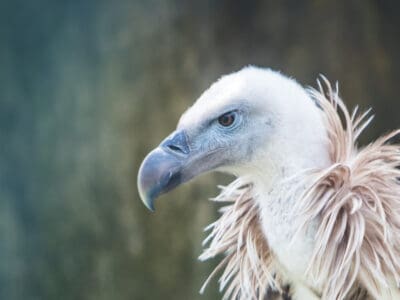
Griffon Vulture
Can spot a dead animal from thousands of feet away

Gypsy Moth
One of the most invasive species in the world

Hamster
Able to run as quickly backwards as forwards!

Hare
Can reach speeds of over 50 mph!

Hawk Moth Caterpillar
Many hawk moth caterpillars eat toxins from plants, but don’t sequester them the way milkweed butterflies do. Most toxins are excreted.

Hedgehog
Thought to be one of the oldest mammals on Earth!

Heron
Inhabits wetlands around the world!
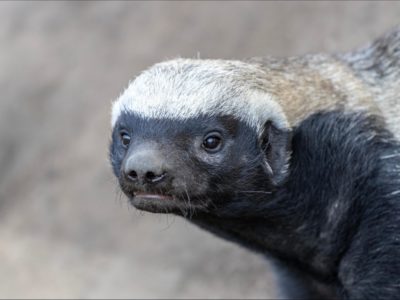
Honey Badger
One of earth's bravest creatures!

Honey Bee
There are only 8 recognized species!

Hoopoe
Stunning bird with a stinky way to deter predators!
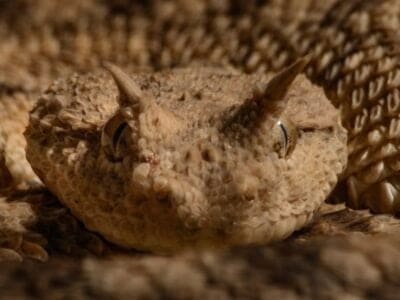
Horned Viper
Horned vipers sidewind across the desert sands of their home.

Horse
Has evolved over 50 million years!

Horsefly
Horseflies have been seen performing Immelmann turns, much like fighter jets.

Housefly
The fly has no teeth

Human
Thought to have orignated 200,000 years ago!

Huntsman Spider
Some huntsman spiders have an interesting way of moving around. Some cartwheel while others do handsprings or backflips.
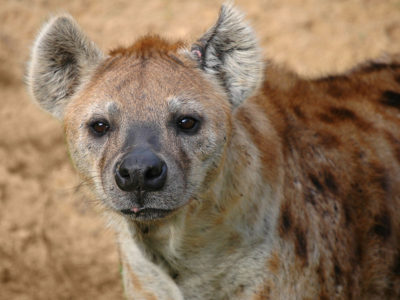
Hyena
There are four different species!
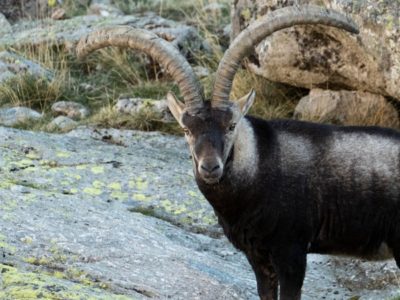
Ibex
Can jump over 6 feet straight up from a standstill

Ibis
Found in swamps, marshes and wetlands!

Insects
There are an estimated 30 million species!
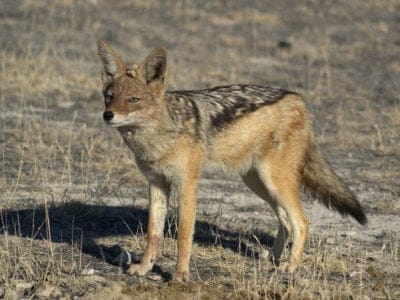
Jackal
Can maintain speeds of 16 km/h!
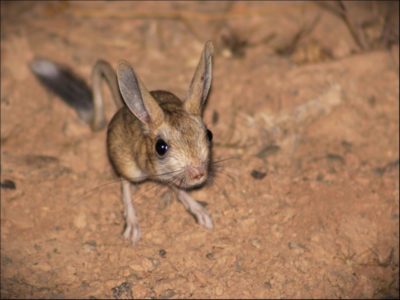
Jerboa
Tiny rodent with a kangaroo-like jump!

Jumping Spider
Some can jump 50 times the length of their bodies

Kingfisher
Inhabits wetlands and woodlands worldwide!

Ladybug
There are more than 5,000 species worldwide!

Leech
Has 10 pairs of eyes!
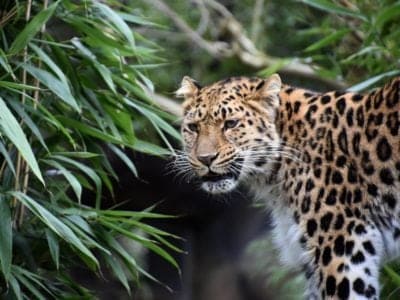
Leopard
Spends much of the time high in the trees!

Leopard Gecko
The first ever domesticated lizard! There are now more than 100 unique color morphs thanks to selective breeding.

Liger
The offspring of a lion and tiger parents!

Linnet
While linnets are monogamous during mating season, they do not mate for life. While breeding pairs are together, the males are highly territorial and will defend the nesting site and the surrounding area.

Lizard
There are around 5,000 different species!

Locust
Each locust can eat its weight in plants each day.

Long-Eared Owl
Ear tufts make it look bigger!
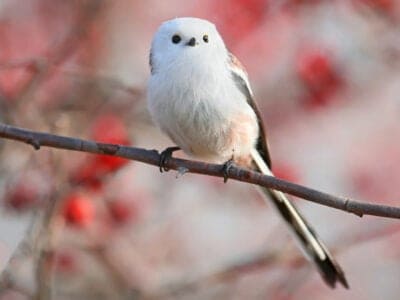
Long-Tailed Tit
Often hangs upside down while feeding!

Magpie
They are found across Europe, Asia and Africa!

Masked Palm Civet
Found throughout Asia, India and China!

Mayfly
There are 2,500 known species worldwide!

Mealybug
They have a symbiotic relationship with ants.

Millipede
Some species have a poisonous bite!

Mole
Primarily hunts and feeds on Earthworms!

Mole Cricket
Adult Mole crickets may fly as far as 5 miles during mating season and are active most of the year.
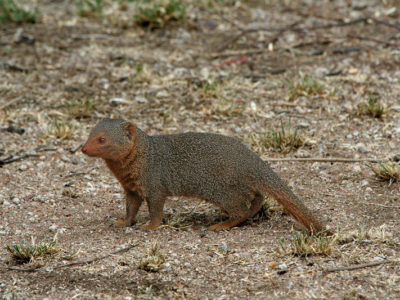
Mongoose
Range in size from just 1 to 3 foot!

Mongrel
Has characteristics of two or more breeds!

Monitor Lizard
Some species are thought to carry a weak venom!

Monkey
There are around 260 known species!

Moorhen
Feeds on aquatic insects and water-spiders!

Mosquito
Only the female mosquito actually sucks blood

Moth
There are 250,000 different species!

Mouse
Found on every continent on Earth!

Mule
The offspring of a horse and donkey parents!
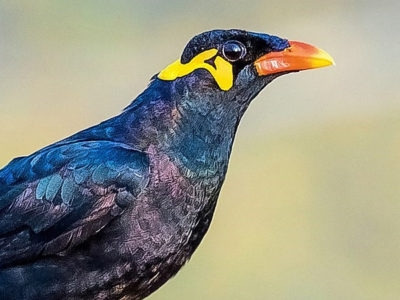
Myna Bird
Many people believe the hill myna bird is better at mimicking humans than a parrot!

Neanderthal
Roamed Asia and Europe for around 100,000 years!

Nematode
Nematodes range in size from 1/10 of an inch to 28 feet long

Newt
Able to regrow lost or damaged limbs!

Nightingale
Named more than 1,000 years ago!

No See Ums
There are more than 5,000 species.

Northern Pintail
Northern pintails migrate at night with speeds reaching 48 miles per hour!

Onager
An onager's coat changes color with the season.

Orb Weaver
Females are about four times the size of males

Osprey
They reuse nesting sites for 70 years!

Otter
There are 13 different species worldwide

Owl
The owl can rotate its head some 270 degrees
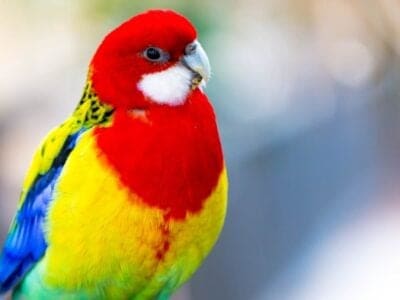
Parakeet
Monk parakeets are the only parakeets that actually build nests. They’re also the only parakeets to nest in great colonies.

Parrot
Can live for up to 100 years!

Peregrine Falcon
Fastest animal on Earth

Persian
Thought to have originated in the Middle East!

Pheasant
Females lay between 8 and 12 eggs per clutch!

Pig
Thought to have been domesticated in 9,000 BC!

Pigeon
They can find their way back to their nests from up to 1300 miles away.

Pika
Found in mountainous regions and rocky areas

Pine Marten
A pine marten can jump from tree to tree similar to a squirrel.
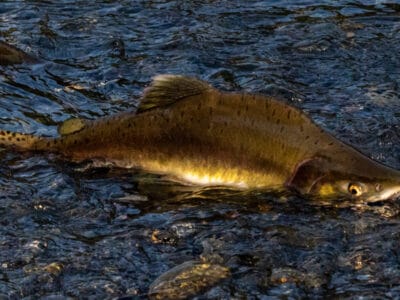
Pink Salmon
The smallest of the North American salmon

Pompano Fish
They are bottom-feeders

Pond Skater
There are 500 different species!

Porcupine
There are 30 different species worldwide!

Praying Mantis
The mantis can turn its head 180 degrees.

Quail
Inhabits woodland and forest areas worldwide!

Rabbit
There are more than 300 different species!

Rat
Omnivores that eat anything!

Rat Snakes
Rat snakes are constrictors from the Colubridae family of snakes.

Red Deer
A male red deer shows his age in his antlers, which become longer and more branched every year.
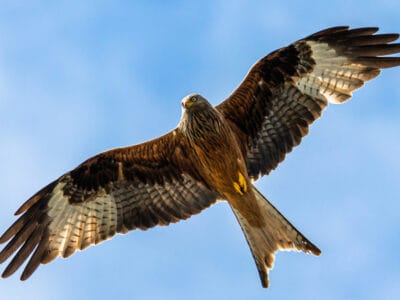
Red Kite
This bird moves its tail to steer its body like a rudder on a boat.
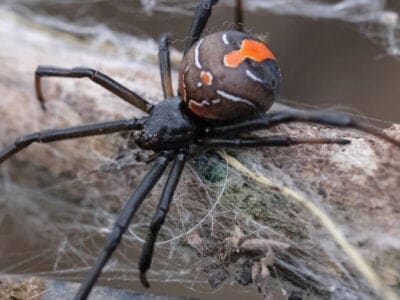
Redback Spider
The redback spiders found in New Caledonia differ from other populations in that they don’t practice sexual cannibalism and don’t bite people as much.

Rhinoceros
It's horns are made from keratin!

River Turtle
Inhabits freshwater habitats around the world!

Robin
There are more than 45 species in Australia alone!

Rodents
The capybara, the world’s largest rodent, likes to be in and around bodies of water. Because of this, the Catholic Church in South America decided that it was a fish, and people were allowed to eat it during Lent and First Fridays.

Rooster
Will mate with the entire flock!
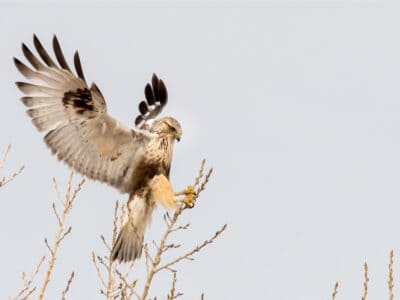
Rough-Legged Hawk (Rough-Legged Buzzard)
Its scientific name, lagopus, is Ancient Greek for “hare” and “foot,” referring to its feathered feet and toes.
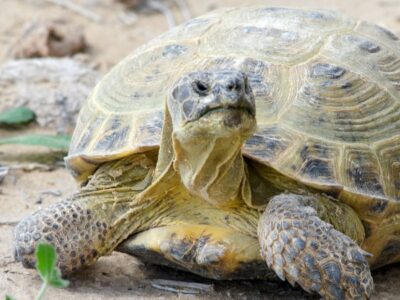
Russian Tortoise
Known by at least five different names

Sable Ferret
Ferrets were used during the Revolutionary War to keep down the rat population.

Salamander
There are more than 700 different species!

Saluki
The Saluki is one of the fastest dog breeds in the world.

Sand Cat
They can survive for weeks without drinking water because the get moisture from their prey.

Sand Crab
The sand crab burrows beneath the sand with its tail
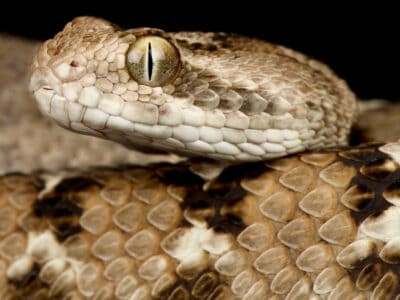
Saw-scaled Viper
This is the smallest venomous snake in India's Big Four.

Scorpion
There are around 2,000 known species!

Sea Eagle
The sea eagle tends to mate for life with a single partner

Seahorse
Males give birth to up to 1,000 offspring!

Sheep
Around 35 million in the English countryside!

Short-Eared Owl
The short-eared owl is one of the most widespread owl species in the world, covering five continents.

Shrew
The spinal column of the shrew Scutisorex somereni is so strong and reinforced that it can support the weight of an adult human.

Shrimp
There are 2,000 different species worldwide!

Skink Lizard
Some skinks lay eggs in some habitats while giving birth to skinklets in other habitats.

Slow Worm
Found widely throughout British gardens!

Slug
They glide around on one foot, which is aided by the slime they produce

Smokybrown Cockroach
Has up to 45 eggs per egg case

Snail
There are nearly 1,000 different species!

Snake
There are around 4,000 known species worldwide
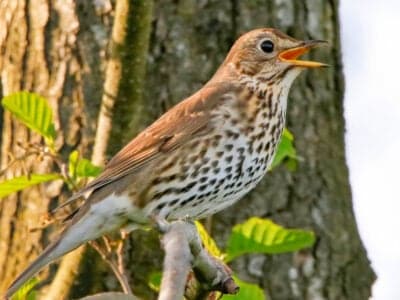
Song Thrush
A male song thrush can have over 100 phrases in his repertoire of songs and can imitate pet birds, telephones and other man-made objects.

Sparrow
There are 140 different species!
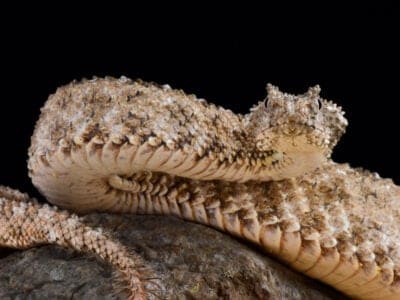
Spider-Tailed Horned Viper
They like to hide in crevices on the sides of cliffs, waiting for prey.

Spider Wasp
They prey on spiders to feed their larvae or they parasitize other spider wasps.

Squirrel
Small rodents found in woodlands worldwide!

Stick Insect
There are more than 3,000 different species!

Stoat
Average adults weigh about 200 grams!

Stork
They can’t sing like other birds.
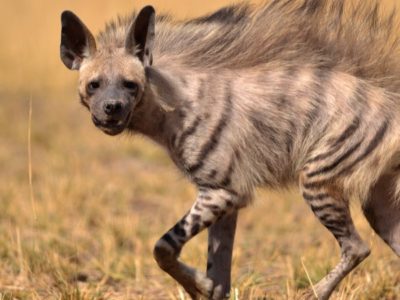
Striped Hyena
The striped hyenas usually mark their territories with the help of the scent gland secretions from their anal pouch.

Swan
Populations have been affected by pollution!

Tangerine Leopard Gecko
Unlike most geckos, tangerine leopard geckos have movable eyelids.

Tarantula Hawk
Tarantula hawks are excellent pollinators, especially for milkweed.

Termite
Their mounds can be up to 9 meters tall!

Thrush
The American robin is called the robin because its red breast reminded European settlers of the robin back in the old country.

Tick
They inject hosts with a chemical that stops them from feeling the pain of the bite

Tiger Beetle
The adult tiger beetle is one of the fastest land insects in the world

Tortoise
Can live until they are more than 150 years old!

Tree Frog
Found in warmer jungles and forests!

Turtles
Some species of aquatic turtles can get up to 70 percent of their oxygen through their butt.
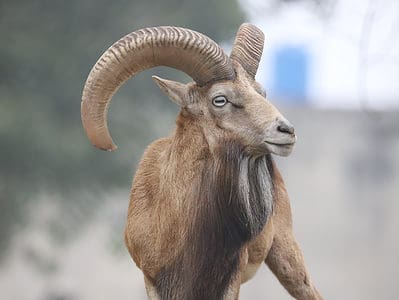
Urial
Urials are the ancestors of modern-day domesticated sheep.

Vinegaroon
Vinegaroons can spray 19 times before the glands are depleted

Viper
Vipers are one of the most widespread groups of snakes and inhabit most

Vulture
There are 30 different species worldwide!

Wasp
There are around 75,000 recognised species!

Water Buffalo
Has been domesticated for thousands of years!
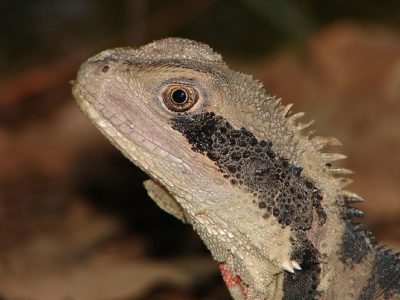
Water Dragon
Spends most of it's time in the trees!

Weasel
The smallest carnivorous mammal in the world!

White Ferret / Albino Ferrets
There are two different types of white ferrets!
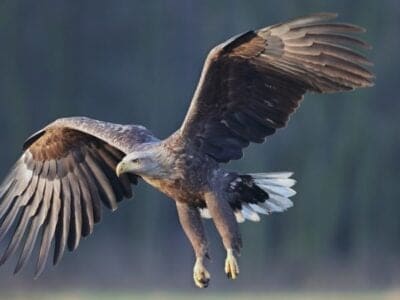
White-Tailed Eagle
It is one of the biggest birds of prey.

White Tiger
None have been seen in the wild for 50 years!
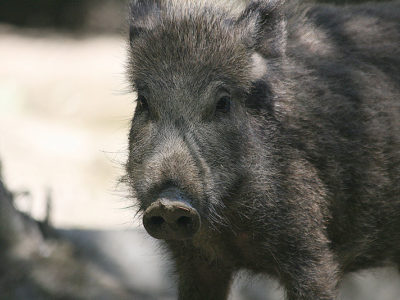
Wild Boar
Males have a top tusk to sharpen the bottom one!

Wolf
Thought to date back more than 300,000 years!

Wolf Spider
Carnivorous arachnid that hunts its prey.

Woodlouse
This animal can roll up into a ball

Woodlouse Spider
Unlike most spiders, woodlouse spiders don’t build a web.

Woodpecker
There are 200 different species!

Worm
Doesn’t have eyes.

Wryneck
They feign death by making their bodies limp and closing their eyes.
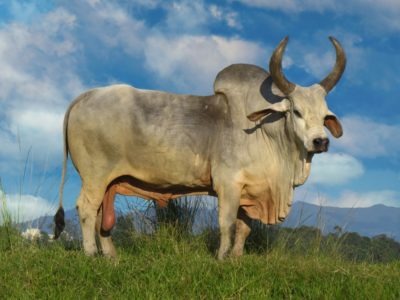
Zebu
There are around 75 different species!
Iranian Animals List
- Admiral Butterfly
- Angora Goat
- Ant
- Antelope
- Armyworm
- Asiatic Black Bear
- Aurochs
- Avocet
- Banana Spider
- Barb
- Barn Owl
- Barn Swallow
- Bat
- Bear
- Bed Bugs
- Bee
- Beetle
- Beluga Sturgeon
- Bird
- Biscuit Beetle
- Black Widow Spider
- Brahminy Blindsnake
- Brazilian Treehopper
- Brown Dog Tick
- Bumblebee
- Butterfly
- Camel
- Camel Cricket
- Camel Spider
- Caracal
- Carpenter Ant
- Carpet Viper
- Cashmere Goat
- Cat
- Caterpillar
- Catfish
- Centipede
- Chameleon
- Cheetah
- Chicken
- Cicada
- Cinereous Vulture
- Cockroach
- Codling Moth
- Common Buzzard
- Common Furniture Beetle
- Common House Spider
- Common Raven
- Cormorant
- Cow
- Crab
- Crab Spider
- Crane
- Cricket
- Crocodile
- Crocodylomorph
- Crow
- Cuckoo
- Deer
- Desert Locust
- Diving Bell Spider (Water Spider)
- Dog
- Dog Tick
- Donkey
- Dormouse
- Dragonfly
- Duck
- Dung Beetle
- Eagle
- Earthworm
- Earwig
- Eel
- Egyptian Vulture
- Elasmotherium
- Elephant
- Eurasian Bullfinch
- Eurasian Eagle-owl
- Eurasian Jay
- European Bee-Eater
- European Goldfinch
- European Robin
- Falcon
- Fallow deer
- False Widow Spider
- Fiddler Crab
- Fire-Bellied Toad
- Firefly
- Flamingo
- Flea
- Fly
- Flying Squirrel
- Fox
- Frog
- Fruit Fly
- Gazelle
- Gecko
- Gerbil
- German Cockroach
- Giant Trevally
- Glass Lizard
- Glowworm
- Gnat
- Goat
- Goldcrest
- Golden Eagle
- Golden Oriole
- Goose
- Grasshopper
- Green Bee-Eater
- Griffon Vulture
- Gypsy Moth
- Hamster
- Hare
- Hawk Moth Caterpillar
- Hedgehog
- Heron
- Honey Badger
- Honey Bee
- Hoopoe
- Horned Viper
- Horse
- Horsefly
- Housefly
- Human
- Huntsman Spider
- Hyena
- Ibex
- Ibis
- Insects
- Jackal
- Jerboa
- Jumping Spider
- Kingfisher
- Ladybug
- Leech
- Leopard
- Leopard Gecko
- Liger
- Linnet
- Lizard
- Locust
- Long-Eared Owl
- Long-Tailed Tit
- Magpie
- Masked Palm Civet
- Mayfly
- Mealybug
- Millipede
- Mole
- Mole Cricket
- Mongoose
- Mongrel
- Monitor Lizard
- Monkey
- Moorhen
- Mosquito
- Moth
- Mouse
- Mule
- Myna Bird
- Neanderthal
- Nematode
- Newt
- Nightingale
- No See Ums
- Northern Pintail
- Onager
- Orb Weaver
- Osprey
- Otter
- Owl
- Ox
- Parakeet
- Parrot
- Peregrine Falcon
- Persian
- Pheasant
- Pig
- Pigeon
- Pika
- Pine Marten
- Pink Salmon
- Pompano Fish
- Pond Skater
- Porcupine
- Praying Mantis
- Quail
- Rabbit
- Rat
- Rat Snakes
- Red Deer
- Red Kite
- Redback Spider
- Rhinoceros
- River Turtle
- Robin
- Rodents
- Rooster
- Rough-Legged Hawk (Rough-Legged Buzzard)
- Russian Tortoise
- Sable Ferret
- Salamander
- Saluki
- Sand Cat
- Sand Crab
- Saw-scaled Viper
- Scorpion
- Sea Eagle
- Seahorse
- Sheep
- Short-Eared Owl
- Shrew
- Shrimp
- Skink Lizard
- Slow Worm
- Slug
- Smokybrown Cockroach
- Snail
- Snake
- Song Thrush
- Sparrow
- Spider-Tailed Horned Viper
- Spider Wasp
- Squirrel
- Stick Insect
- Stoat
- Stork
- Striped Hyena
- Swallowtail Butterfly
- Swan
- Tangerine Leopard Gecko
- Tarantula Hawk
- Termite
- Thrush
- Tick
- Tiger Beetle
- Tortoise
- Tree Frog
- Turtles
- Urial
- Vinegaroon
- Viper
- Vulture
- Wasp
- Water Buffalo
- Water Dragon
- Weasel
- White Ferret / Albino Ferrets
- White-Tailed Eagle
- White Tiger
- Wild Boar
- Wolf
- Wolf Spider
- Woodlouse
- Woodlouse Spider
- Woodpecker
- Worm
- Wryneck
- Zebu
Animals in Iran FAQs (Frequently Asked Questions)
What animals live in Iran?
Iran has plenty of big cats, ungulates (hoofed mammals), rodents, reptiles, and migrating birds. The country seems to be particularly rich in bats as well.
What is the most dangerous animal in Iran?
The most dangerous animals might be scorpions or snakes, including the very venomous and aggressive saw-scaled viper.
Are there lions in Iran?
The Asiatic lion, a subspecies of the common lion, once roamed Iran, but the only country you can now find it is in India. The Iranian government has made a few attempts to restore the lion population to very limited success thus far.
Are there bears in Iran?
Yes, Iran is home to a light-colored version of the brown bear and the Asiatic black bear (which can be identified by the white mark on the chest). However, not much is known about their native ecological role in Iran.
What is the national animal of Iran?
Iran has several national symbols, including the Asiatic lion, Asiatic cheetah, Persian leopard, Persian cat, and Persian fallow deer.
Are there monkeys in Iran?
No, Iran does not have any monkeys, since it lacks the appropriate climate and forests.






